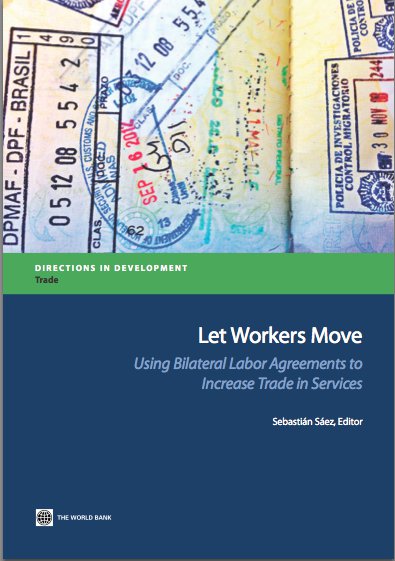28 Jun 2013
Books/ Book Chapters
Panizzon, Marion
To What Extent Do Bilateral Migration Agreements Contribute to Development in Source Countries? An Analysis of France’s Migration Pacts

Book chapter by Marion Panizzon in Sebastian Saez (Ed.), Let Workers Move: Using Bilateral Labor Agreements to Increase Trade in Services, The World Bank, Washington D.C., 2013, pp. 85-108.
Introduction:
Bilateral migration agreements are poorly articulated and understood (Holzmann and Pouget 2010). This chapter attempts to comprehend such agreements by analyzing France’s bilateral migration agreements with countries in West and North Africa and Eastern Europe.
The choice of the appropriate agreement template and its sequencing with respect to other types of agreements may have value for temporary migration and trade policy formulation, particularly where labor mobility is conceived of and conceptualized as part of services trade policy. France’s recent bilateral migration agreements exemplify contradictory efforts in facilitating labor market admission. Its agreement with Tunisia, for example, contains support mecha- nisms and structures for facilitating labor migration and improving the employ- ability and skill levels of Tunisian workers. Other French migration pacts are less impressive in terms of formalizing the role of the private sector in host and source countries, but they focus on policy initiatives for increasing unilateral transfers, such as the return migrant entrepreneurship, the circular migration of scientists and academics, the defiscalization of migrants’ savings, the co-financing of diaspora investments, and the increases in individual remittances flows.
France’s migration pacts vary widely on matters such as the source country’s negotiating leverage and access to regional blocs such as the European Neighbourhood Policy (ENP), Mediterranean initiatives, or European Union (EU) preaccession negotiations. In particular, France’s bilateral migration agreements with countries falling under the ENP apply a different and more developed template than its agreements with countries not considered among the European Union’s “closest neighbors.” The pacts also vary with respect to the number of issues to be negotiated (including readmission) and the source country’s articula- tion of development priorities. The newest pacts aim to prod the governments of migrant source countries to articulate their own migration policies and to join the fight against irregular migration and document fraud. In contrast to their one- dimensionally focused precursors—seasonal and guest-worker agreements, co- development conventions, fishery agreements, readmission and visa agreements, and exchange agreements for students, young professionals, and trainees—the new pacts are comprehensive agreements for managing migration. Their innova- tive feature is multifunctionality (Migreurop 2010). They create a common ground for the host and source countries to address the essential challenges of migration management: labor migration; the fight against irregular migration, including readmissions, border securitization, and document fraud; and the nexus between migration and development.
The chapter is organized as follows. The first section illustrates the differences and complementarities between labor mobility liberalized in the context of a preferential trade agreement and labor mobility facilitated in a bilateral, nontrade migration agreement. This section evaluates the viability of emerging, second- generation migration agreements for dealing with temporary labor mobility. In particular, it describes potential limitations of these bilateral agreements with respect to multilateral openings in Mode 4 of the General Agreement on Trade in Services (GATS), including complementarities in terms of regulatory advan- tages. The second section identifies the motives and determinants of bilateral migration agreements as well as the institutional, regulatory, and administrative features of French migration pacts, which are used to assess the effectiveness of bilateral cooperation as a tool for managing migration. The third section exam- ines French migration agreements for the emerging complementarities with European Union migration and neighborhood policies. The fourth section explores the extent to which France’s bilateral migration agreements grant more favorable terms of labor market access to countries of origin concluding such agreements. The last section provides some concluding remarks.
Further info
Order book

